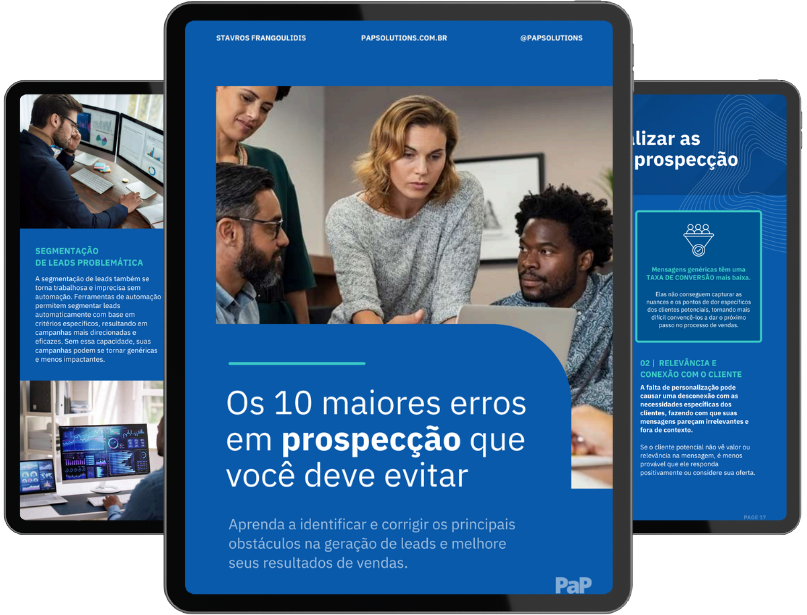Semana passada eu fiz uma pesquisa que continha uma situação hipotética e perguntava a opinião dos leitores.
A situação colocada era a seguinte.
Suponhamos que você necessite faturar R$ 1 milhão por mês e conta com os seguintes ativos:
- Duas categorias de produtos (Produto A e Produto B), onde uma delas é responsável por 80% do faturamento.
- Uma carteira de clientes revolvente que dá metade do valor, ou seja, R$ 500 mil do faturamento vem de pedidos de clientes recorrentes.
- Uma equipe de prospecção composta por 2 pessoas bem treinadas.
- Uma área de desenvolvimento onde são projetados novos produtos e novas categorias.
- Uma área de marketing que produz as campanhas publicitárias.
Onde você apostaria suas fichas para buscar os R$ 500 mil mensais que faltam?
Responderam 185 pessoas. Tabulei os resultados na tabela abaixo:
RESPOSTAS (AGRUPADAS) – % de RESPOSTAS
Mais produtos – 22%
Aumento da equipe de prospecção – 42%
Mais e melhores campanhas publicitárias – 18%
Melhor relacionamento com a carteira atual – 12%
Outros – 06%
Claro que há situações e situações.
Entretanto, na maioria das vezes é na prospecção que há mais espaço para trazer os resultados.
Sintomas de baixo nível de prospecção e falha nos processos de conversão
- Não há volume de oportunidades de negócios e as que tem, são, na sua maioria, especulativas.
- A empresa como um todo apresenta um quadro de baixa atividade na geração de leads, na maioria das vezes circunscritos por indicações ou recompras.
- Há baixa oxigenação da carteira de clientes, ou seja, não há quase novos clientes entrando e os que entram são de baixo volume transacional.
- Muito tempo despendido em leads que não convertem: Reuniões, apresentações, propostas, viagens, muita gente envolvida e o negócio não vinga.
- Não há um processo claro de classificação de leads para priorizar a agenda da equipe comercial.
- Não há processos semi-automáticos de relacionamento para acalentar os leads e aquecê-los a ponto de trabalhar na conversão.
- Não há combos de ofertas. Os produtos e seus preços são vistos como uma única coisa.
Mediante esse quadro, temos que descartar os novos produtos, as campanhas publicitárias e a gestão de relacionamento com a carteira atual.
Estamos em uma situação onde é necessário dobrar o faturamento. Sair de R$500 mil para R$ 1 milhão.
Para tanto impreterivelmente devem entrar mais clientes e o fator tempo é crucial.
Se temos uma equipe de duas pessoas bem treinadas, devemos partir para contratação de mais duas pessoas que devem ficar exclusivas na prospecção. Sua missão é oferecer a categoria A (que corresponde a 80% do faturamento) em novos targets similares aos clientes atuais, tentando novas praças e novos segmentos de mercado.
Os dois prospectores mais antigos devem ter todo foco na conversão dos novos leads gerados, além de ajudar na prospecção.
Assim colheremos mais rapidamente os resultados do que se escolhêssemos uma das outras alternativas colocadas.
Por exemplo, vamos analisar o aumento e melhoria das campanhas publicitárias. Digamos que nossa estratégia para ampliar a carteira de clientes estivesse centrada em fazer uma nova campanha publicitária, podendo ser anúncios no target, eventos e outros meios de gerar tráfego para o nosso mundo.
Certamente haverá geração de leads, talvez até mais do que na prospecção, mas com certeza de muito menor qualificação.
E aí teremos um quadro de muitos leads ruins gerados, tratados por um processo de qualificação falho, onde eu teria que colocar meus prospectores falando com muita gente “ruim”.
Resultado: uma miríade de atividades “espuma”: reuniões, apresentações, propostas, viagens, discussões internas etc, mas em um processo ineficaz, ou seja, estamos dedicando o tempo nas situações de baixa conversão.
O correto aí seria ter um processo de conversão de leads que não envolvesse meus prospectores nos estágios iniciais de triagem. Falamos de sistemas e processos que levam um certo tempo para “curar o queijo”.
O investimento necessário, versus os resultados alcançados frente a necessidade (que é dobrar o faturamento), na maioria das vezes não é viável.
Lançar novos produtos seria uma segunda alternativa, mas somente quando saturada a prospecção. Aí sim falaremos em campanhas publicitárias de sustentação e uma estrutura de conversão de leads.
A equipe comercial seria alocada para oferecer os produtos novos na carteira ativa e depois para novos targets. Claro que será uma entrada em novos mercados lenta e gradual e uma estratégia de “comer pelas beiradas” o que leva um certo tempo para gerar resultados.
Por isso podemos até empreender com essa estratégia em paralelo com a primeira, se houver fôlego para o investimento necessário.
Posto isso, a prospecção é a primeira alternativa, inclusive para dar insumos de mercado para a área de desenvolvimento de produtos.
Vamos prospectar.

